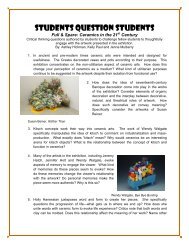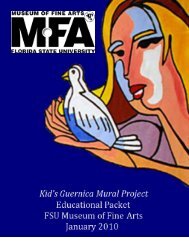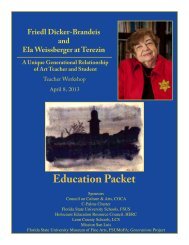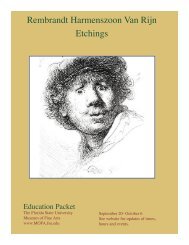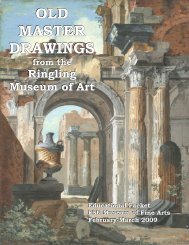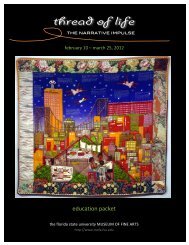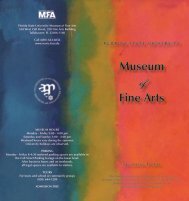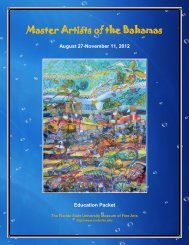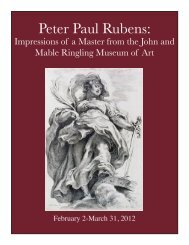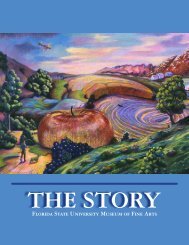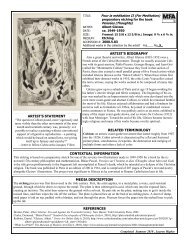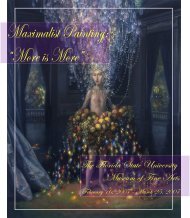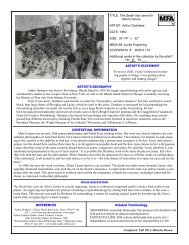Matrix: Contemporary Printmaking - Museum of Fine Arts - Florida ...
Matrix: Contemporary Printmaking - Museum of Fine Arts - Florida ...
Matrix: Contemporary Printmaking - Museum of Fine Arts - Florida ...
You also want an ePaper? Increase the reach of your titles
YUMPU automatically turns print PDFs into web optimized ePapers that Google loves.
Fall 2009<br />
6-8<br />
9-12<br />
SUNSHINE STATE STANDARDS<br />
The student understands how idiomatic expressions have an impact on communication<br />
and reflect culture, by using them correctly in both oral and written form.<br />
The student understands selected economic, political, and social events that have<br />
shaped the target culture and its relationship with the United States across time.<br />
The student selects and uses appropriate prewriting strategies, such as brainstorming,<br />
graphic organizers, and outlines.<br />
The student organizes information using appropriate systems.<br />
The student understands specific ways in which language has shaped the reactions,<br />
perceptions, and beliefs <strong>of</strong> the local, national, and global communities.<br />
Social Studies<br />
Pre k-2<br />
The student compares everyday life in different places and times and understands that<br />
people, places, and things change over time.<br />
The student understands that history tells the story <strong>of</strong> people and events <strong>of</strong> other times<br />
and places.<br />
The student understands the significance and historical contributions <strong>of</strong> historical figures<br />
during this period (e.g., the journeys <strong>of</strong> famous explorers).<br />
3-5<br />
The student understands how individuals, ideas, decisions, and events can influence<br />
history.<br />
The student uses a variety <strong>of</strong> methods and sources to understand history (such as<br />
interpreting diaries, letters, newspapers; and reading maps and graphs) and knows the<br />
difference between primary and secondary sources.<br />
The student understands various aspects <strong>of</strong> family life, structures, and roles in different<br />
cultures and in many eras (e.g., pastoral and agrarian families <strong>of</strong> early civilizations,<br />
families <strong>of</strong> ancient times, and medieval families).<br />
6-8<br />
The student understands how patterns, chronology, sequencing (including cause and<br />
effect), and the identification <strong>of</strong> historical periods are influenced by frames <strong>of</strong> reference.<br />
The student knows the relative value <strong>of</strong> primary and secondary sources and uses this<br />
information to draw conclusions from historical sources such as data in charts, tables,<br />
graphs.<br />
The student understands the impact <strong>of</strong> significant people and ideas on the development<br />
<strong>of</strong> values and traditions in the United States.<br />
9-12<br />
The student understands how ideas and beliefs, decisions, and chance events have<br />
been used in the process <strong>of</strong> writing and interpreting history.<br />
The student identifies and understands themes in history that cross scientific, economic,<br />
and cultural boundaries.<br />
The student understands how social, cultural, economic, and environmental factors<br />
contribute to the dynamic nature <strong>of</strong> regions.<br />
4



